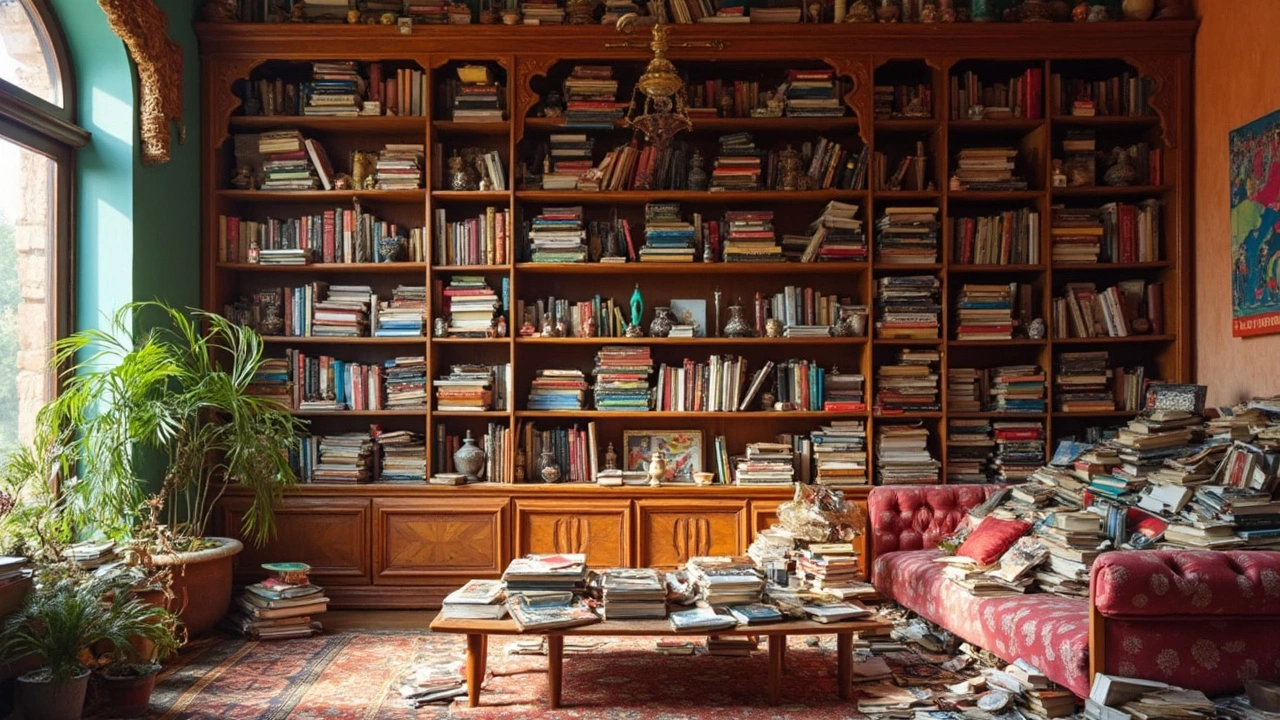Bookshelves: Choose, Style, and Organize Like a Pro
Ever walked into a room and felt the books were spilling everywhere? A good bookshelf can tidy the mess, show off your style, and create a comfy spot for reading. The right shelf doesn’t have to be pricey or complicated – it just needs to fit your space, your stuff, and your taste.
Choosing the Right Bookshelf
First, measure the wall. Grab a tape measure and note the height, width, and depth you can work with. A narrow bookshelf works great in a hallway, while a tall unit fills an empty wall in a living room. Remember to leave a few inches at the top so the shelf doesn’t look squeezed.
Next, think about material. Wood gives a warm, classic feel, but metal is lighter and suits modern rooms. If you have kids or pets, pick a finish that resists scratches – a painted laminate or a sealed wood works well.
Consider the shelf spacing. Tall books need more room, so look for adjustable shelves or a unit with variable heights. Some people love extra space for décor items like plants, photo frames, or sculptures. A mixed‑use bookshelf lets you switch between books and décor without trouble.
Don’t forget weight capacity. A heavy stack of hardcovers can bend a weak shelf. Check the product specs or test a few books before loading the whole unit. If you plan to store large coffee tables or boxes, a sturdier frame is a must.
Styling and Arranging Your Books
Now that you have a shelf, it’s time to fill it. Start with the books you use most and place them at eye level. This makes choosing a read quick and easy. Stack the rest by size – tall books together, short ones together – to keep the look balanced.
Mix in décor for visual interest. A small plant, a decorative box, or a framed photo breaks up the rows of spines and adds personality. Keep the décor light – too many objects can make the shelf feel cluttered.Try the “gallery wall” method: place a few art pieces or prints on the shelves, leaning them against the back. This gives a gallery vibe without hanging anything on the wall.
If you love a tidy look, line up the books by color. A rainbow shelf makes a bold statement and can become a conversation starter. For a calmer feel, stick to neutral tones and let a few colorful accents pop.
Don’t forget the floor. Place a rug under the bookshelf if it sits on a hard floor. A rug adds softness and defines a reading nook. Add a comfy chair or floor cushion nearby, and you’ve got a perfect spot for relaxing.
When you need more storage, think upside down. Mount a shallow board above the bookshelf to hold magazines or trays. That extra shelf uses vertical space you’d otherwise waste.
Finally, keep it organized. Take a quick look every few months and remove books you’re finished with. Donate them or swap with friends. A tidy shelf stays inviting and makes the room feel larger.
Bookshelves are more than just storage – they’re a design piece that reflects who you are. By measuring, picking the right material, and styling with a mix of books and décor, you can create a functional and stylish focal point in any room.
Disadvantages of Bookshelves: More Than Just a Storage Issue
Bookshelves, while essential for book lovers, come with their own set of challenges. They occupy significant space, require regular maintenance, and can become cluttered over time. They also limit flexibility in room design and might not be suitable for small living spaces. Understanding these disadvantages can help you make better decisions about integrating bookshelves into your home.





